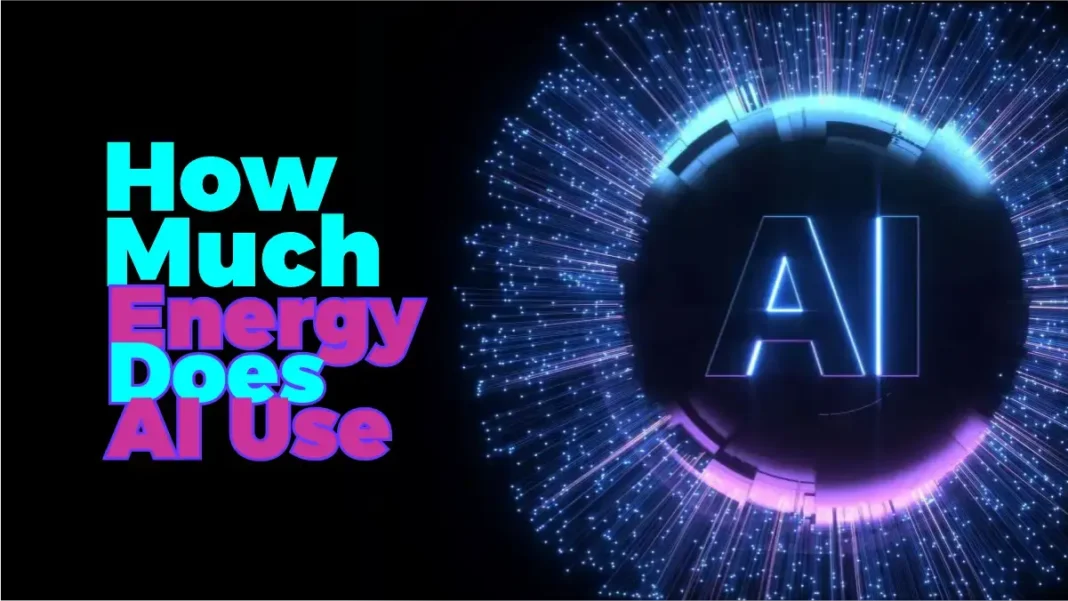Artificial Intelligence (AI) is transforming everything-from healthcare and finance to entertainment and transportation. But as we marvel at its capabilities, a critical question looms: How much energy does AI use? To answer that, we must first understand how AI works, and then explore the environmental toll of its rapid expansion.
AI systems rely on vast computational resources to process data, train models, and deliver real-time results. These processes demand enormous energy, often hidden behind the sleek interfaces of chatbots and recommendation engines. As AI becomes more embedded in our daily lives, its energy footprint is growing-and so are the concerns about sustainability.
Understanding How AI Works: The Foundation of Its Energy Demand
To grasp AI’s energy consumption, it’s essential to understand its architecture:
- Data Collection & Preprocessing: AI begins by ingesting massive datasets-text, images, audio, and more. This stage involves cleaning, organizing, and formatting data for model training.
- Model Training: Using machine learning and deep learning algorithms, AI systems adjust internal parameters (often billions or trillions) to learn patterns. This phase is computationally intensive and energy-hungry.
- Inference: Once trained, AI models respond to user queries. Each interaction-whether generating text or recognizing speech-requires energy, especially when scaled to millions of users.
- Continuous Learning & Updates: AI systems evolve over time, requiring periodic retraining and updates, adding to their cumulative energy demand.
According to Coursera and GeeksforGeeks, AI relies on neural networks, natural language processing, and computer vision-all of which require high-performance computing infrastructure. [1] [2]
The Energy Cost of Training AI Models
Training large-scale AI models is one of the most energy-intensive tasks in tech today:
- GPT-3, with 175 billion parameters, consumed approximately 1,287 megawatt-hours (MWh) of electricity during training-equivalent to driving 112 gasoline-powered cars for a year. [3]
- The International Energy Agency (IEA) reports that global data centers consumed 415 terawatt-hours (TWh) in 2024, accounting for 1.5% of global electricity use. [4]
- By 2030, this figure could more than double to 945 TWh, surpassing Japan’s current annual electricity consumption. [4]
These figures highlight the staggering energy demands of AI, especially as models grow in complexity and scale.
Environmental Impact: Carbon Emissions and Resource Strain
AI’s energy consumption has direct environmental consequences:
- Carbon Emissions: In the U.S., data centers account for over 4% of national electricity use, with 56% powered by fossil fuels, resulting in 105 million tons of CO₂ emissions annually. [3]
- Water Usage: Cooling data centers requires vast amounts of water. In Virginia’s “Data Center Alley,” water usage surged by 63% to support AI infrastructure. [3]
- E-Waste and Rare Minerals: AI hardware relies on rare earth elements and generates significant electronic waste, complicating sustainability efforts. [5]
The UN Environment Programme emphasizes evaluating both software and hardware life cycles to fully understand AI’s environmental footprint. [5]
Inference: The Hidden Ongoing Energy Drain
While training gets the spotlight, inference-the process of running AI models-is the silent energy drain:
- Each ChatGPT query uses 10x more electricity than a Google search, costing about 0.36 cents per query. [5]
- As AI becomes ubiquitous, inference is expected to dominate future energy demands, especially in consumer applications like virtual assistants and recommendation engines. [6]
- According to Carnegie Mellon University, data center electricity demand could grow by 350% by 2030, driven largely by inference workloads. [7]
This shift underscores the need to optimize everyday AI interactions-not just training methods.
Research and Innovation: Can AI Be Made More Energy Efficient?
Leading institutions are exploring ways to reduce AI’s energy footprint:
| Institution | Initiative | Key Insight |
|---|---|---|
| Carnegie Mellon University | Open Energy Outlook | Forecasts grid impact of AI; proposes least-cost energy solutions [7] |
| Saarland University & DFKI | Knowledge Distillation | Reduced AI energy use by 90% using leaner models[8] |
| IEA Energy & AI Observatory | Global Monitoring | Tracks AI’s energy demand and offers policy guidance [9] |
Innovations like edge computing, specialized LLMs, and automated learning systems are paving the way for more sustainable AI. [10]
People Also Asked
How much energy does AI use?
It’s use varies by task. A single prompt may use as little energy as a microwave for a second, while video generation can consume enough to power it for an hour. [11]
How does AI affect energy costs?
AI increases energy costs due to its reliance on data centers. These facilities require constant power and cooling, often sourced from fossil fuels. [11]
Will AI consume more electricity in the future?
Yes. AI could soon consume more electricity than entire nations, with projections showing data centers may use 12% of U.S. electricity by 2028. [11]
Can AI be made more energy efficient?
Yes. Techniques like model pruning, knowledge distillation, and neural architecture search can reduce energy use by up to 90%. [8]
🧾 Conclusion: The Path Forward for Sustainable AI
AI’s energy demands are real-and rising. But with strategic innovation and policy coordination, we can mitigate its environmental impact. As Paulina Jaramillo, Trustee Professor at Carnegie Mellon, puts it:
“There’s a lot of interest in Congress on AI, energy, and emissions. Quantifying the impact is the first step toward responsible innovation.” [7]
The future of AI must be not only intelligent-but also sustainable.


